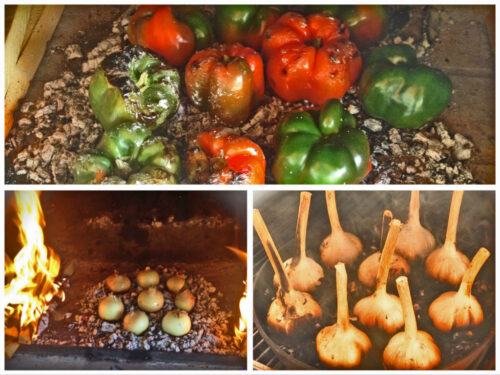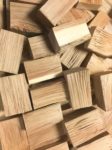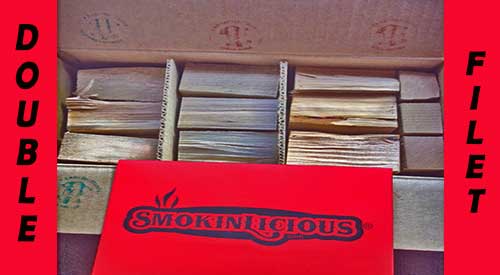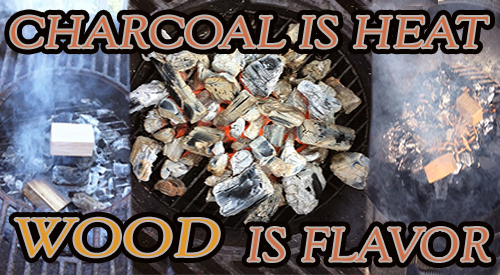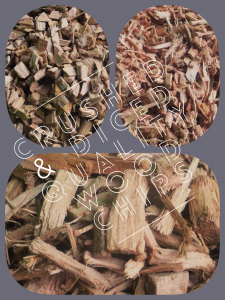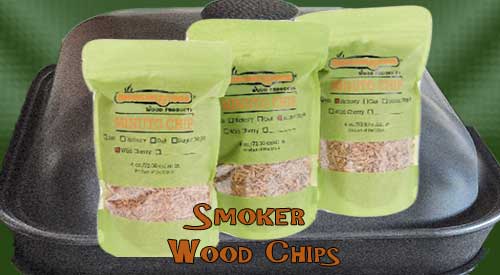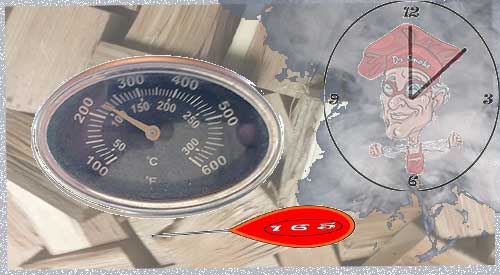Fri 20 Dec 2019
WOOD SUPPLIER- ARE YOU GETTING WHAT YOU PAID FOR?
Posted by DrSmokeRead other related stories: Commercial , Commercial smokehouse , Cooking With Wood , Smoking Tips
No Comments
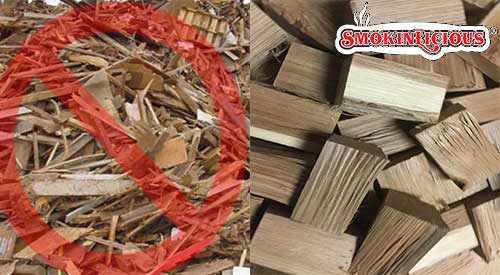
Not all wood supplier is like Smokinlicious®, cutting their product from forest grown fresh harvest. Rather they use recycled material.
WOOD SUPPLIER- ARE YOU GETTING WHAT YOU PAID FOR?

One of the things we do at SmokinLicious® for commercial-grade customers is take in a sample of their current smoking wood and analyze it. When you’re a Company producing a food product, you need consistency of the final product. When it comes to smoked foods, this can be a challenge as wood is a plant material that can be highly variable when put through the stages of combustion. If a mixture of woods is used in the process, combustion rate, biochar production, volatile burn off, and other parameters of the wood can be affected in a negative way.
Like a Game of Roulette
If a price is the only factor guiding your decision on a wood supplier, then you are playing a game of roulette. Just like any other business transaction, you should be looking for authenticity of the wood. Let me give you an example:
Germany is the only country currently taking direct steps to protect woods on the endangered species list. Yes, there is such a list of 183 countries participating in some level of enforcement. The direct goal of The Convention on International Trade in Endangered Species (CITES) is to prevent deforestation but the challenge, as with most lofty goals, is personnel to enforce the regulation. Germany is uncovering case after case of fraudulent wood sales and finding that less expensive woods in the manufacture while invoices reflect another more expensive wood.
Now, look at smoking wood products. There are no regulations. A company can package wood product of pretty much any condition, label it as a specific species, and put it into the marketplace. There is no accounting for:
▪ how the wood was collected
▪ what the wood pieces are made from
▪ treatments conducted on the wood
▪ if the wood is 100% of a specific species
▪ the origination of the wood
▪ the age of the wood
Mixed Product Dominates
I can’t even count how many times we’ve visited a Company’s location to view their wood supply and find that what they thought they were purchasing is not what’s present. Some suppliers have gone so far as to including softwoods in the product labeled as hardwood! This doesn’t happen with just the larger pieces of wood either. Microchips commonly used in industrial smokehouses rarely contain 100% of a said wood. Perhaps this is the reason why packaging regulations for a smokehouse bacon or ham can state it is Applewood smoked when Applewood may have only made up 10% of the wood used in the smoking process!
Ask and Demand
The budget for wood can be substantial for companies and restaurants. You have every right to demand a product’s accountability. Ask questions!
What is the origin of the wood? Remember, many smoking wood suppliers are not involved in the manufacturing process. They are the seller, not the manufacturer meaning they likely have little or no knowledge of the history of the wood.
Has the wood undergone any processes? Kiln dried? Preservation chemical added? If the wood didn’t start out for cooking, it is likely that processes used to stabilize the wood for its main purpose, say flooring, were applied. That won’t make it the best choice for a cooking method or even a safe choice.
You have every right to request a Letter of Guarantee or Letter of Authenticity. Remember, woods used for food preparation or cooking currently have no universal regulations. The only wood regulation that exists in the USA is regarding moving firewood and that is regulated primarily by the individual states.
Why be so concerned about the wood when we don’t consume wood?
We may not consume the wood in its natural form but we certainly consume food products cooked over or near that wood, that infuses many of the organic compounds of the wood. Not all organic compounds are good. There are many known toxicities in certain species of wood with softwoods containing the highest risk. That is the reason why you should never cook with a softwood. Other wood has the potential to cause sickness and in some cases, if a person’s system is already compromised, death.
Take the time to learn about the wood you will use in the cooking method and ask the questions that could be the difference between a successful venture and partnership with your wood supplier or a disaster you simply didn’t need.
Proving you with additional information on woods including the science behind the fire, along with tips, techniques, and recipes. That’s why you should subscribe and follow us so you don’t miss a thing.
Purchase products:
Wood Chunks- Double and Single Filet
Wood Chips- Grande Sapore®

More Related reading on this subject
Additional reading:
-6 REASONS WHY CEDARWOOD SHOULD NOT BE YOUR TOP CHOICE FOR COOKING
-BEYOND PRICING: THE TOP THINGS TO CONSIDER WHEN PURCHASING COOKING WOOD
-THE TOP 8 MISTAKES TO AVOID WHEN COOKING & GRILLING WITH WOOD
-DON’T COOK WITH TRASH!

Dr. Smoke- know your wood supplier “As one of the premier cooking wood manufactures in the world, always use caution on sourcing wood, especially when you’re going to cook with it- too much is being labelled “green” and it’s not fit for cooking.”



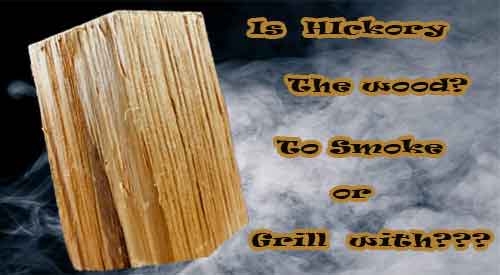

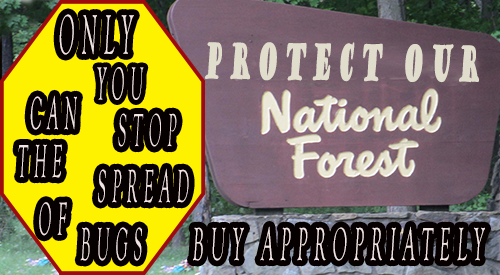
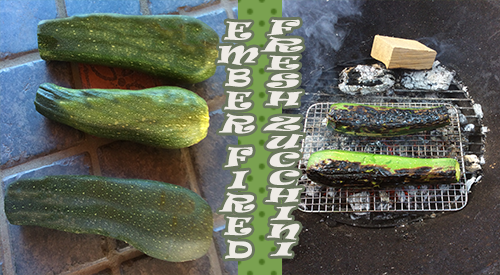
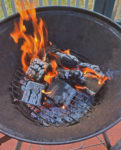 Know this from the start – You do not need a large fire! A small fire is best to accomplish your cooking in about an hour’s time. For my fire, I am using ten SmokinLicious
Know this from the start – You do not need a large fire! A small fire is best to accomplish your cooking in about an hour’s time. For my fire, I am using ten SmokinLicious 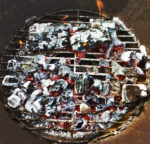 You will know when the coals or embers are ready for cooking when you have uniform coals and they are glowing red from the bottom and gray on top. I keep a couple of larger coals banked to the side to maintain heat and for reserved hot coals. Just in case I need to rake more to the cooking side. I like to nestle a high heat metal cooking rack on the hot coals and then place my
You will know when the coals or embers are ready for cooking when you have uniform coals and they are glowing red from the bottom and gray on top. I keep a couple of larger coals banked to the side to maintain heat and for reserved hot coals. Just in case I need to rake more to the cooking side. I like to nestle a high heat metal cooking rack on the hot coals and then place my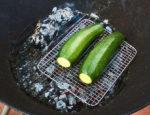 With the zucchini and coal rack in place, I give the embers about 8 minutes to char and cook the first side of the zucchini. After that time, I gently turn the zucchini so that each side gets an even char. Once the first 8 minutes are done, there will be less time needed for each of the other sides as the zucchini will hold heat. I’ve added one additional wood piece to my banked fire just to be sure I have enough heat in the coal area. I will not put the lid on the unit during the entire cooking process as this is open fire cooking. My total coal cooking time is approximately 16 minutes.
With the zucchini and coal rack in place, I give the embers about 8 minutes to char and cook the first side of the zucchini. After that time, I gently turn the zucchini so that each side gets an even char. Once the first 8 minutes are done, there will be less time needed for each of the other sides as the zucchini will hold heat. I’ve added one additional wood piece to my banked fire just to be sure I have enough heat in the coal area. I will not put the lid on the unit during the entire cooking process as this is open fire cooking. My total coal cooking time is approximately 16 minutes. After placing my ember fired fresh zucchini on hot coals for about 16 minutes total, turning several times to get an even char, this spectacular vegetable is ready for eating. You will see, there is very little coal bed left following this technique so remember, if you are cooking more than a
After placing my ember fired fresh zucchini on hot coals for about 16 minutes total, turning several times to get an even char, this spectacular vegetable is ready for eating. You will see, there is very little coal bed left following this technique so remember, if you are cooking more than a 
